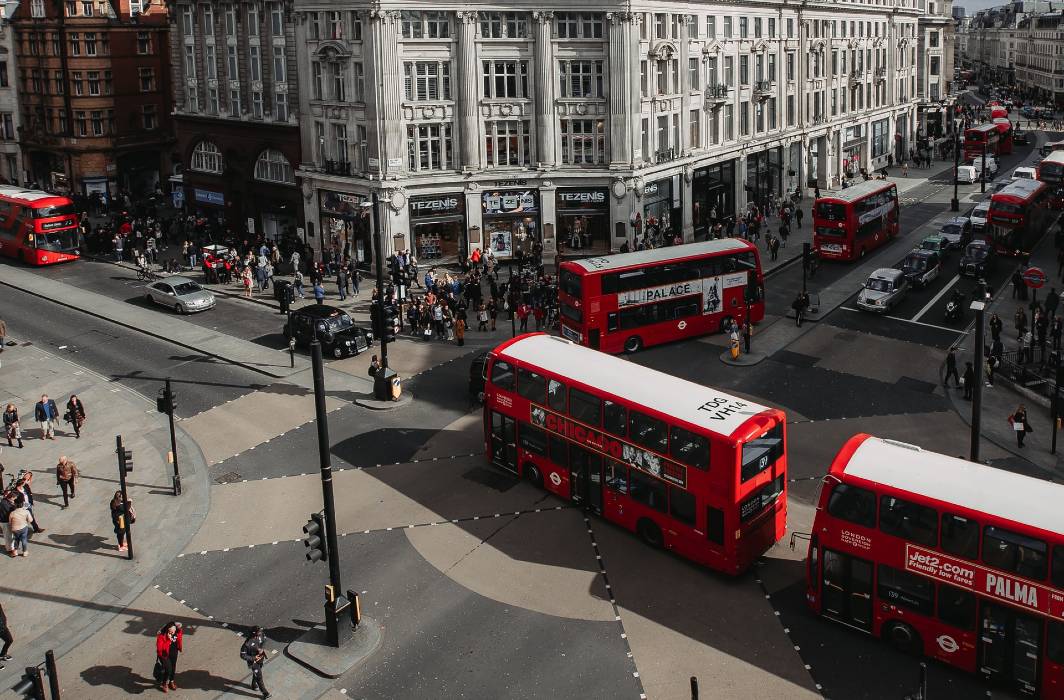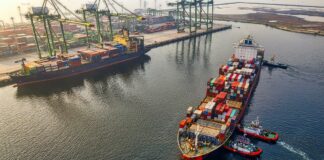Decarbonising UK transport: what should businesses prepare for?
The government’s Transport Decarbonisation Plan (TDP) is due to be published in spring 2021. Surface transport is currently the largest source of UK greenhouse gas emissions and the Committee on Climate Change has identified it as one of the areas where ambitious change is needed. So what measures should the TDP include to get the UK on track for net zero, and what should businesses prepare for?
Getting smarter on HGVs
According to the HGV Alliance, 89% of all goods transported by land in Great Britain are moved directly by road. Unfortunately, heavy goods vehicles (HGVs) have a disproportionate effect on the climate; they make up 5% of road vehicles, but contribute 17% of the UK’s road transport emissions, and efficiency is actually falling.
In July 2019, new rules came into force requiring the manufacturers of lorries to get emissions down 15% by 2025 and 30% by 2030. However, any emissions cuts achieved by cleaner vehicles look likely to be wiped out by an increase in HGV miles travelled.
It is not clear how the Transport Decarbonisation Plan will tackle HGV emissions while securing the supply chains that currently rely on haulage and protecting the roughly 1 in 12 of UK jobs in this sector. However, around 28% of HGV travel in the UK involves empty vehicles, so there is potential to significantly reduce emissions without cutting a single necessary journey.
One way of reducing empty running might be to bring back the HGV User Levy, currently suspended, in a form that incentivises lorry firms to run more efficiently. Distance-based charging has already been introduced in Germany, Switzerland and Austria, reducing the amount of empty running in those countries. Businesses that use HGVs should prepare for the possibility that the Transport Decarbonisation Plan will include some kind of financial penalty for empty running. Working to reduce this now will also cut costs for the business.
Cutting van emissions
Emissions from vans have increased by 19% since 2012, so this is another area that the Transport Decarbonisation Plan is likely to focus on.
In January, regulations came into force that set binding emissions reduction targets for new vans, but the reductions are set against a 2021 baseline that isn’t even known yet. The TDP may set a more meaningful reductions target by putting it in terms of absolute emissions rather than percentage reductions, or the government may kick the can down the road by sticking with the current targets.
As with cars, the government aims to phase out petrol and diesel engines and incentivise a move to electric. The Plug-In Van Grant is a subsidy that covers 20% of the price of an electric van, but they are still much more expensive than diesel vans even with the subsidy. The TDP may aim to redress this by increasing the grant, so businesses planning to upgrade their vans would be well advised to hold off until the TDP is published.
A quicker and cheaper way to reduce van emissions would be to simply reduce the number of vans. When Sainsbury’s trialled the use of electric cargo bikes to deliver groceries, it found that 96.7% of orders could be fulfilled in a single journey. The delivery bikes were also quicker than vans because they didn’t get stuck in traffic. It is unlikely that the TDP will include any incentives for exploring alternatives to van transport, but businesses don’t have to wait for government permission before conducting their own feasibility trials.
Shipping
International and domestic shipping make up 3.4% of the UK’s greenhouse gas emissions. That is low, especially in proportion to the value it has for the UK economy, but shipping emissions are on course to keep rising unless action is taken. So, although shipping is already a carbon-efficient form of transport, the government is investing in research to lower emissions in this sector. Developing low- emission or zero-emission fuels and propulsion technologies will be essential to decarbonise shipping. The Transport Decarbonisation Plan will probably re-affirm the government’s ongoing commitment to this.
Supporting the shift to electric
The ban on sales of new petrol and diesel vehicles has already been brought forward from 2040 to 2030. However, the timing of the ban is not as important as the context: a meaningful shift to electric vehicles won’t happen unless they become more affordable and adequate charging infrastructure is in place.
The March 2020 Budget allocated £500 million for electric vehicle (EV) charging infrastructure, to be spent over the next five years – will that be enough to trigger such a shift?
Chargepoints: a business opportunity
The possibility of becoming part of the publicly available chargepoint network is a huge opportunity for many businesses. Even a “rapid” charge can take up to 30 minutes, making it a different experience from a petrol or diesel refill. Offering a rapid chargepoint is a way of attracting drivers to a site who will then stay to use other facilities. A traditional petrol station shop has customers who grab a few items before going on their way; a supermarket that offers EV charging facilities might see customers doing their whole weekly food shop while their car battery charges. Landowners who offer rapid chargepoints will find that the promise of a captive market makes them more attractive to food outlets and other retail tenants.
Of course, there is a race to make EV charging as fast as possible, with infrastructure company IONITY claiming that it is developing the technology to cut charging times to just eight minutes. But most electric cars aren’t yet equipped to accept these higher speeds. In the medium term, it seems likely that electric car drivers will use a recharge as a chance to take a break – and spend money.
Supporting rail freight
Rail is one of the most carbon-efficient ways to move goods, and rail freight is actually becoming more efficient. The government has previously expressed the aim of decarbonising the railways by removing all diesel-only trains before 2040. It’s not yet clear if this will be possible, because the currently available alternatives to overhead electrification aren’t powerful enough to move freight trains. But the government has invested £4 million in the development of possible new technologies.
Modal shift
The average car in 2018 produced 20% less greenhouse gas emissions per mile than the average car in 1990, yet transport emissions are only 3% lower than they were then, because there are more motor vehicles on the roads. Changing people’s travel habits to reduce overall miles travelled must be part of the government’s net zero strategy, and the Department of Transport has already said that this is a strategic priority.
To help achieve this goal, the Transport Decarbonisation Plan should continue the work already being done to encourage more active travel through the creation of safe cycling and walking infrastructure. It may also include incentives for businesses to support greener commutes for employees, such as more support for cycle to work schemes.












